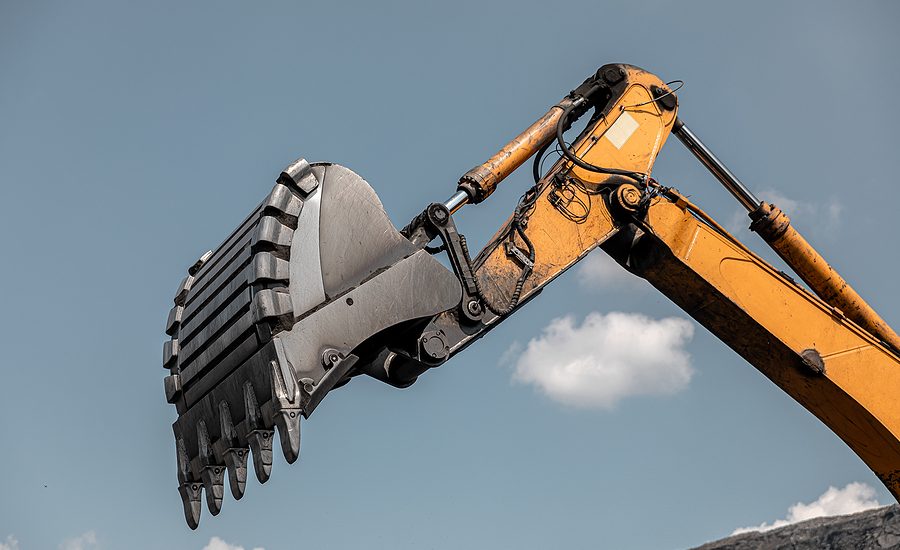- April 10, 2023
- Posted by: admin
- Category: Blog

Even though heavy equipment is a necessity in most construction projects, they can still be very dangerous when used incorrectly. Rollovers are among the most common ways that workers get injured while working near heavy machinery.
To minimize the risk of injury while working with heavy equipment, follow these safety guidelines:
Operator Training & Proper Procedures
It is important that workers are trained on how to operate all types of heavy equipment safely. This can be done through a combination of classroom instruction and hands-on training. Some of the topics covered in this type of training include hazard identification, safety features, and safe maneuvering.
Aside from being knowledgeable about how to properly mount and dismount equipment, workers should also be taught how to start each piece of machinery correctly. This can be done through regular refresher courses and training sessions. Only those who are trained can operate the heavy machinery.
Be Mindful Of What Is Around The Job Site
When working on heavy equipment, it’s important to be mindful of the obstacles you may encounter while in the area. If possible, deenergize overhead power lines. Also, make sure that you mark all underground utilities, like water, sewer, electrical, and gas, clearly and safely. Doing so can help minimize delays and minimize damage.
Workers should be kept away from areas where heavy machinery is working. Swing radius must be observed while operating in tight spaces to avoid hitting people or other equipment.
Maintenance & Visual Inspections Are Crucial
Before each use, it’s important to inspect heavy equipment to make sure it’s in good working condition. Make sure that all of its components are in good working order, and check the oil and hydraulic levels. Also, make sure that all of its attachments are secure.
It’s also important to inspect heavy equipment to make sure it’s in good working condition. Make sure that all of its alarms and lights are working properly. Also, make sure that all of its arms, buckets, and other equipment are extended in all directions. This ensures that the machine is safe to use. If something isn’t working properly, it could cause a major safety issue.
Always Ensure The Machinery & Equipment Used Is Always Operated As The Manufacturer Intended
Each type of equipment has been designed to perform specific tasks. For instance, wheel loader aren’t made to carry people in the bucket, and excavator aren’t designed to lift workers using aerial lifts. When choosing the right piece of machinery, make sure it fits the task at hand.
When it comes to using machinery, it’s important to avoid overwork or overloading. Also, make sure that the equipment has the necessary lift capacity and payload. When it comes to handling materials, make sure that the riggings are secure.
Have Your Wits & Balance Around Equipment
Due to the number of injuries that workers suffer every year, there is a proper and a bad way to dismount and mount heavy equipment. Always maintain at least three points of contact while climbing. Also, never carry anything with you when exiting or entering the cab.
You should never enter or exit a moving piece of equipment while it’s in operation. You must also disconnect the hydraulic controls and engage the parking brake to avoid unauthorized use. You should take the keys with you so that you can avoid unauthorized use.
Last But Not Least, Wear Whatever Harness Or Seatbelts Required
Not only are they a suggestion, but they can also save your life if the equipment in your vehicle starts to tip over. If you are not wearing a seatbelt or harness, you might as well jump out of the cab to avoid getting severely injured. However, this is not the best option, as the equipment could tip over and fall on you as you try to make your way out.
The purpose of the seatbelt is to keep you safe in the event that the equipment in your vehicle gets rolled over. It will prevent you from getting thrown out of the cab or getting bumped around.
Remember, Its Always Safety 1st
While these are not the “all” of recommendations regarding best safety practices one should implement when operating machinery or equipment, they are a good foundation to start on. If you are planning on having your job sites as safe as possible, then your team must be trained. We have a vast network of resources and people we can recommend and help with you such matters. If you have any questions or comments, please share them with us.
We also can help you get your contractor’s license. As a contractor licensing company, we have helped thousands of contractors across the United States get their contractor license, and we want to help you too. First, you provide us with some basic information on your skills, background, testing, education, and other information. Then, we will fill out all the paperwork, let you know if you are missing anything, finish up the application, and submit it to the Board on your behalf to get you approved.
To get your contractor license, click our Florida contractor’s license page to learn more and get started with us or call 239-777-1028.
